Smart Region Mobility Framework
Abstract
1. Introduction
2. Review of Related Literature
2.1. Smart City and Smart Region Concept
2.1.1. Smart Region
2.1.2. Smart City Case Studies
2.2. Intelligent Transportation Systems
2.3. Mobility-as-a-Service (MaaS)
3. Methodology
3.1. The Study Area
3.1.1. Gathering Background Information
3.1.2. Coverage Map and Inventory of Public Transportation Terminals, Service Routes, and Other Logistics Facilities
3.1.3. Major Road Transportation Infrastructures
3.2. Sustainable Technology-Assisted Route Planning for Region VI (STARPLAN-VI)
3.3. Smart Region Mobility Framework
3.4. Data Flow Architecture for the Smart Region Mobility Framework
3.4.1. Data Sources
Crowd Density Estimation
Passenger Demand Forecast Using Crowd Density Estimation
Boarding and Alighting Passenger Frequency
Boarding/Alighting Time Calculation
Load Factor
3.4.2. Data Ingest Layer
3.4.3. Data Warehouse
3.4.4. Data Visualization (Application Services)
4. Results and Discussion
4.1. Demographics and Socioeconomic Data
4.2. Social Services Infrastructure Data
4.3. Coverage Map and Inventory of Public Transportation Terminals, Service Routes, and Other Logistics Facilities
4.4. Smart Region, Smart City Candidates, Smart City Regional Center
- The use of mobile application in managing agricultural products (crop schedule, production, and marketing);
- Development of efficient and comfortable mass transportation systems;
- Upgrading and expansion of existing airports and seaports in the region;
- Upgrading and expansion of highways and bridges in the region;
- Development of eco-cultural tourism hub, and tourism complex which includes hotels, parks, and commercial centers;
- Development of recreational centers, hospitals, and BPO offices;
- Proposal to open a direct flight from Iloilo to Guam, USA;
- Development of farm-to-market roads to allow a faster and cost-efficient to transportation agricultural goods.
4.5. Transportation Network Modeling
4.6. A Case Study and Implementation of Advanced Traveler Information System (ATIS) and Advanced Public Transportation Systems (APTS) in the Region
4.6.1. Crowd Density Counters
4.6.2. Mobile Application for Traveler Information
5. Conclusions
Author Contributions
Funding
Institutional Review Board Statement
Informed Consent Statement
Data Availability Statement
Acknowledgments
Conflicts of Interest
References
- McKinsey Global Institute. Outperformers: High-Growth Emerging Economies and the Companies that Propel Them; MGI: Washington, DC, USA, 2018; pp. 1–168. [Google Scholar]
- Ezell, S. Intelligent Transportation System; Information Technology and Innovation Foundation: Washington, DC, USA, 2010. [Google Scholar]
- European Commission. Communication from the Commission to the European Parliament, the Council, the European Economic and Social Committee and the Committee of the Regions; European Union: Brussels, Belgium, 2013. [Google Scholar]
- Kim, J.; Moon, Y.-J.; Suh, I.-S. Smart Mobility Strategy in Korea on Sustainability, Safety and Efficiency toward 2025. IEEE Intell. Transp. Syst. Mag. 2015, 7, 58–67. [Google Scholar] [CrossRef]
- Brown, A. Connectivity and the Mobility Industry; Warrendale, P.A., Ed.; SAE International: Warrendale, PA, USA, 2011; pp. 113–259. [Google Scholar]
- IMD World Competitiveness Centre. Smart City Index 2020. pp. 1–124. Available online: https://www.imd.org/smart-city-observatory/smart-city-index/ (accessed on 2 June 2021).
- Tesoriere, G.; Campisi, T. The Benefit of Engage the “Crowd” Encouraging a Bottom-up Approach for Shared Mobility Rating. In Proceedings of the International Conference on Computational Science and Its Applications, Cagliari, Italy, 1–4 July 2020; pp. 836–850. [Google Scholar]
- Garau, C.; Masala, F.; Pinna, F. Benchmarking smart urban mobility: A study on Italian cities. In Proceedings of the International Conference on Computational Science and Its Applications, Banff, AB, Canada, 22–25 June 2015; pp. 612–623. [Google Scholar]
- Azzari, M.; Garau, C.; Nesi, P.; Paolucci, M.; Zamperlin, P. Smart city governance strategies to better move towards a smart urbanism. In Proceedings of the International Conference on Computational Science and Its Applications, Melbourne, Australia, 2–5 July 2018; pp. 639–653. [Google Scholar]
- GlobalData. Smart Cities in the Americas: Regional Status & Key Case Studies; Americas Insider Report; GlobalData Plc: London, UK, 2019; pp. 1–24. [Google Scholar]
- World Economy Research Institute: SGH Warsaw School of Economics. The Role of Cities in Creating Competitive Advantages; Poland Competitiveness Report 2018; SGH Publishing House: Warsaw, Poland, 2018; Chapters 13–15; pp. 219–254. [Google Scholar]
- Bauer, M.; Helbig, D.; Mokhov, V.; Eltsova, M. Smart Region concept as a solution for sustainable development for region with a rural and urban character. J. Phys. Conf. Ser. 2019, 1415, 012018. [Google Scholar] [CrossRef]
- Sutriadi, R. Defining smart city, smart region, smart village, and technopolis as an innovative concept in indonesia’s urban and regional development themes to reach sustainability. IOP Conf. Ser. Earth Environ. Sci. 2018, 202, 012047. [Google Scholar] [CrossRef]
- GlobalData. Smart Cities in Europe: Regional Status & Key Case Studies; Europe Insider Report; GlobalData Plc: London, UK, 2019; pp. 1–24. [Google Scholar]
- GlobalData. Smart Cities in Asia-Pacific: Regional Status & Key Case Studies; Asia-Pacific Insider Report; GlobalData Plc: London, UK, 2019; pp. 1–24. [Google Scholar]
- GlobalData. Smart Cities in Africa and the Middle East: Regional Status & Key Case Studies; Europe Insider Report; GlobalData Plc: London, UK, 2019; pp. 1–24. [Google Scholar]
- Lecce, V.D.; Amato, A. A Distributed Measurement System for Smart Monitoring of Vehicle Activities. In Proceedings of the 2010 IEEE Instrumentation & Measurement Technology Conference Proceedings, Austin, TX, USA, 3–6 May 2010; pp. 1–5. [Google Scholar]
- Giesecke, R.; Surakka, T.; Hakonen, M. Conceptualising Mobility as a Service. In Proceedings of the 2016 Eleventh International Conference on Ecological Vehicles and Renewable Energies (EVER), Monte Carlo, Monaco, 6–8 April 2016; pp. 1–11. [Google Scholar]
- Caravani, P.; De Santis, E.; Graziosi, F.; Panizzi, E. Communication Control and Driving Assistance to a Platoon of Vehicles in Heavy Traffic and Scarce Visibility. IEEE Trans. Intell. Transp. Syst. 2006, 7, 448–460. [Google Scholar] [CrossRef]
- Kolosz, B.W.; Grant-Muller, S.M.; Djemame, K. A Macroscopic Forecasting Framework for Estimating Socioeconomic and Environmental Performance of Intelligent Transport Highways. IEEE Trans. Intell. Transp. Syst. 2013, 15, 723–736. [Google Scholar] [CrossRef]
- Li, L.; Ding, W.; Nan-Ning, Z.; Lin-Cheng, S. Cognitive cars: A new frontier for ADAS research. IEEE Trans. Intell. Transp. Syst. 2012, 13, 395–407. [Google Scholar] [CrossRef]
- Li, K.; Chen, T.; Luo, Y.; Wang, J. Intelligent environment-friendly vehicles: Concept and case studies. IEEE Trans. Intell. Transp. Syst. 2012, 13, 318–328. [Google Scholar] [CrossRef]
- Ferreira, M.; d’Orey, P.M. On the impact of virtual traffic lights on carbon emissions mitigation. IEEE Trans. Intell. Transp. Syst. 2012, 13, 284–295. [Google Scholar] [CrossRef]
- Kolosz, B.W.; Grant-Muller, S.M. Appraisal and Evaluation of Interurban ITS: A European Survey. IEEE Trans. Intell. Transp. Syst. 2015, 16, 1070–1087. [Google Scholar] [CrossRef]
- Mercier, P. Handisyde. In Intelligent Transport Systems: EU-Funded Research for Efficient, Clean and Safe Road Transport; European Commission: Brussels, Belgium, 2010. [Google Scholar]
- Toral, S.; Torres, R.M.; Barrero, F.; Arahal, M. Current paradigms in intelligent transportation systems. IET Intell. Transp. Syst. 2010, 4, 201. [Google Scholar] [CrossRef]
- Japan International Cooperation Agency (JICA). Mega Manila Region Highway Network Intelligent Transport System (ITS) Integration Project; DPWH and MMDA: Manila, Philippines, 2013.
- RITA. Real-Time Data Capture and Management Evaluation and Performance Measures; Technical Report FHWA-JPO-11-136; ITS Joint Program Office; Research and Innovative Technology Administration; U.S. Department of Transportation: Washington, DC, USA, 2011.
- European Union. ITS Action Plan: Study Regarding Guaranteed Access to Traffic and Travel Data and Free Provision of Universal Traffic Information; Technical Report TREN/G4/FV-2008/475/01; European Commission, Directorate-General Mobility and Transport: Brussels, Belgium, 2010. [Google Scholar]
- European Union. Intelligent Transport Systems in Action; European Commission, Directorate-General Mobility and Transport: Brussels, Belgium, 2011. [Google Scholar]
- DSRC International Task Force of Japan. Study on the Next Generation ITS Radio Communication in Japan; Technical Report; International Telecommunications Union: Geneva, Switzerland, 2003. [Google Scholar]
- Ministry of Land, Infrastructure, Transport and Tourism. ITS Initiatives in Japan; Technical Report; Ministry of Land, Infrastructure, Transport and Tourism: Tokyo, Japan, 2012.
- Department of Public Works and Highways. Current State of ITS Applications in DPWH; ITS Forum: Manila, Philippines, 2018. [Google Scholar]
- Gurínová, J. Integrating Intelligent Transport Systems into the Transportation Planning Process; University Žilina, Faculty of Operation and Economics of Transport and Communications, Department of Road and City Transport: Žilina, Slovakia, 2005. [Google Scholar]
- Bekiaris, E.; Stevens, A.; Bauer, A.; Wiethoff, M. ITS implementation: From impact assessment to policy recommendations. Res. Transp. Econ. 2004, 8, 605–637. [Google Scholar] [CrossRef]
- Canale, A.; Tesoriere, G.; Campisi, T. The MAAS development as a mobility solution based on the individual needs of transport users. AIP Conf. Proc. 2019, 2186, 160005. [Google Scholar]
- Zipeng, Z.; Zhang, N. A Novel Development Scheme of Mobility as a Service: Can It Provide a Sustainable Environment for China? Sustainability 2021, 13, 4233. [Google Scholar] [CrossRef]
- Billones, R.K.C.; Sybingco, E.; Lim, L.A.G.; Culaba, A.B.; Vicerra, R.R.P.; Fillone, A.M.; Bandala, A.A.; Dadios, E.P. Vision-Based Passenger Activity Analysis System in Public Transport and Bus Stop Areas. In Proceedings of the 2018 IEEE 10th International Conference on Humanoid, Nanotechnology, Information Technology, Communication and Control, Environment and Management (HNICEM), Baguio City, Philippines, 29 November–2 December 2018; pp. 1–6. [Google Scholar] [CrossRef]
- Escolano, C.O.; Billones, R.K.C.; Sybingco, E.; Fillone, A.D.; Dadios, E.P. Passenger demand forecast using optical flow passenger counting system for bus dispatch scheduling. In Proceedings of the 2016 IEEE Region 10 Conference (TENCON), Singapore, 22–25 November 2016; pp. 1875–1878. [Google Scholar] [CrossRef]
- Billones, R.K.C.; Bandala, A.A.; Lim, L.A.G.; Culaba, A.B.; Vicerra, R.R.P.; Sybingco, E.; Fillone, A.M.; Dadios, E.P. Vehicle-Pedestrian Classification with Road Context Recognition Using Convolutional Neural Networks. In Proceedings of the 2018 IEEE 10th International Conference on Humanoid, Nanotechnology, Information Technology, Communication and Control, Environment and Management (HNICEM), Baguio City, Philippines, 29 November–2 December 2018; pp. 1–6. [Google Scholar] [CrossRef]
- Mistretta, M.; Goodwill, J.A.; Gregg, R.; DeAnnuntis, C. Best Practices in Transit Service Planning; Final Report No. BD549-38; Center for Urban Transportation Research for the Florida Department of Transportation: Tampa, FL, USA, 2009. [Google Scholar]
- Transportation Research Board. Transit Capacity and Quality of Service Manual, 3rd ed.; Bus Capacity, Transit Cooperative Research Program (TCRP) Report 165; TRB: Washington, DC, USA, 2013. [Google Scholar]
- Philippine Statistics Authority. 2020 Regional Social & Economic Trends Region VI–Western Visayas; PSA: Metro Manila, Philippines, 2020. [Google Scholar]
- Bangko Sentral ng Pilipinas–Department of Economic Research. Report on Regional Economic Developments in the Philippines 2018; BSP Department of Economic Research: Metro Manila, Philippines, 2018.
- Guimaras Province Local Government Unit. Local Public Transport Route Plan of Guimaras Province; Guimaras PLGU: Guimaras, Philippines, 2019. [Google Scholar]
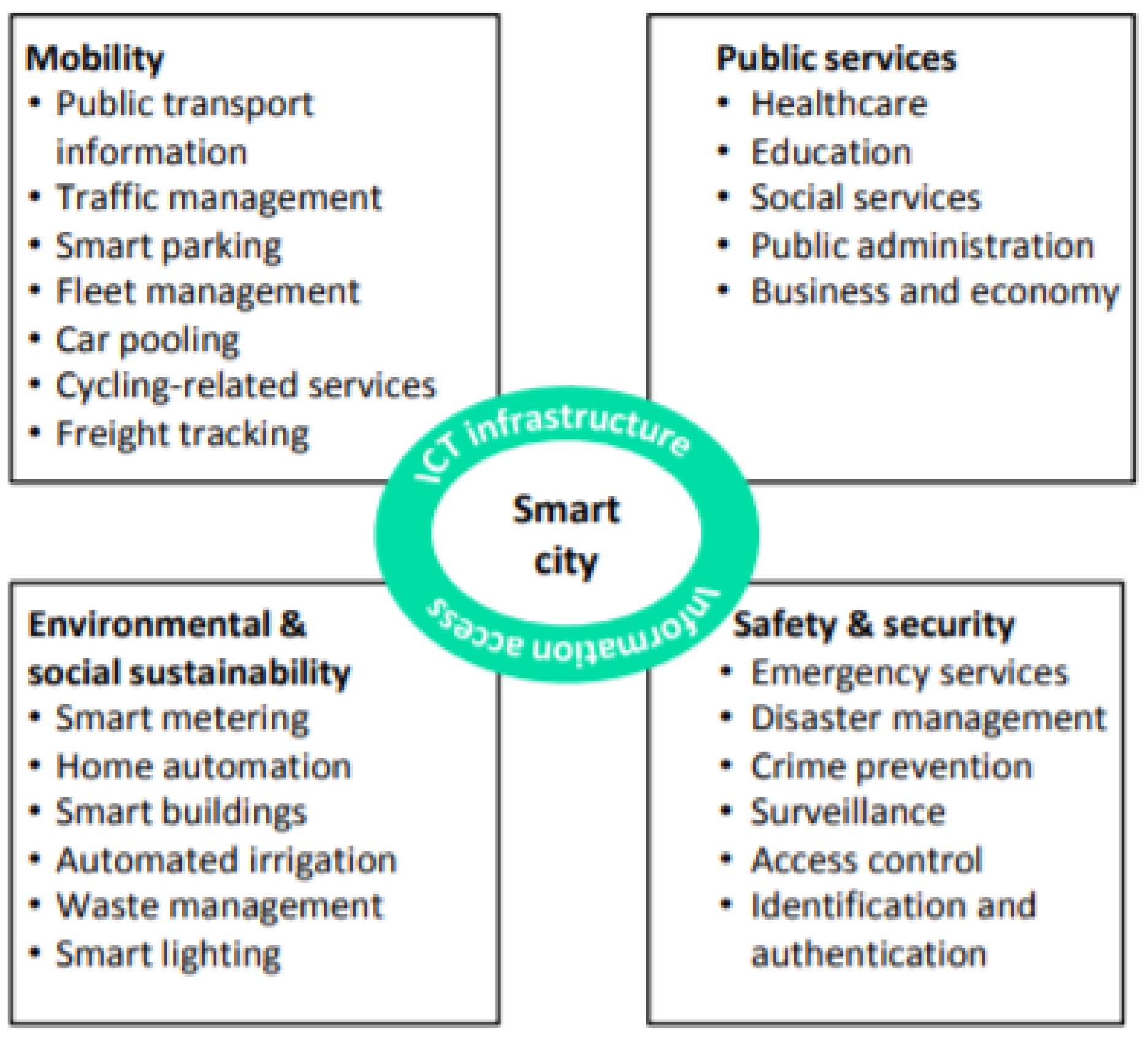

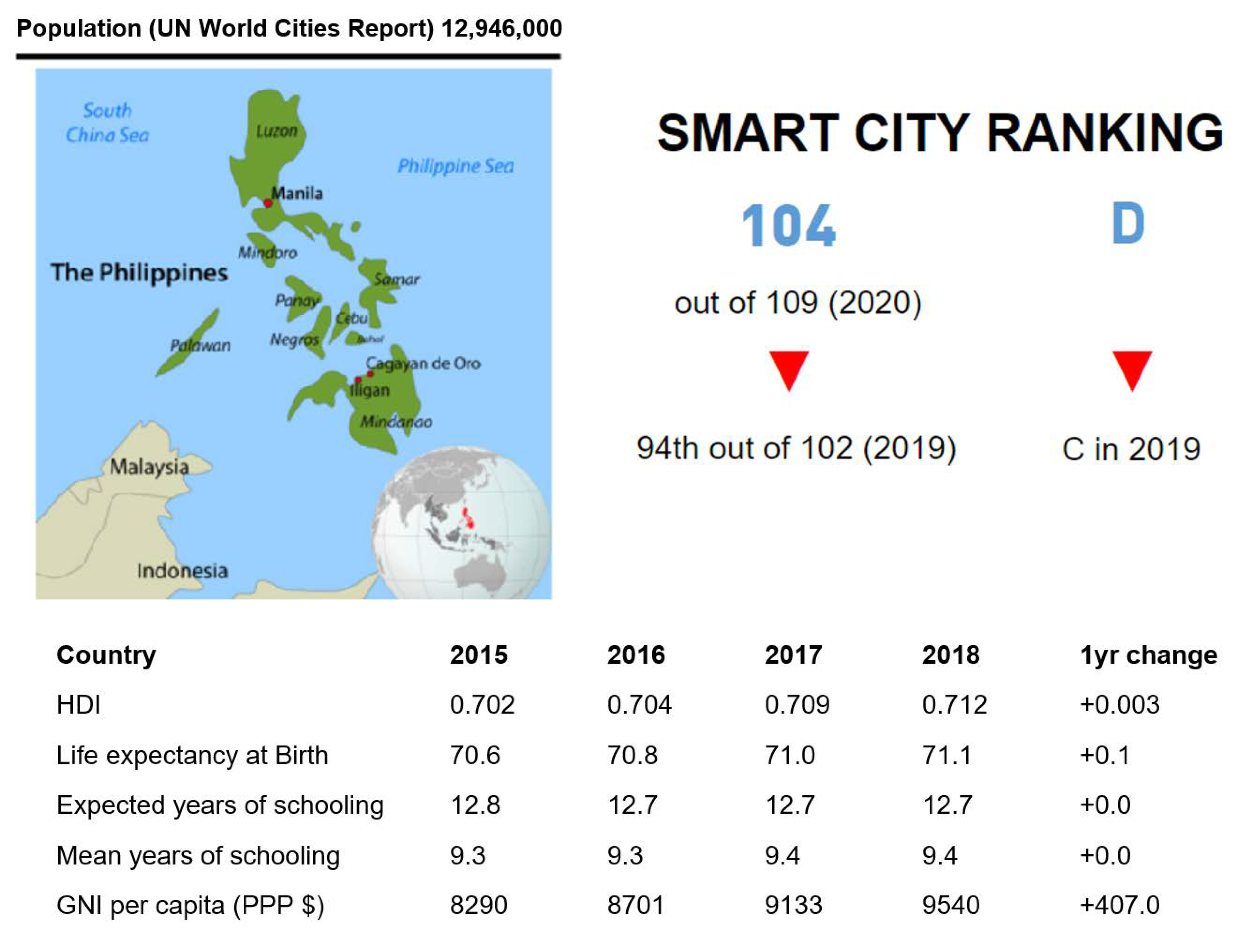
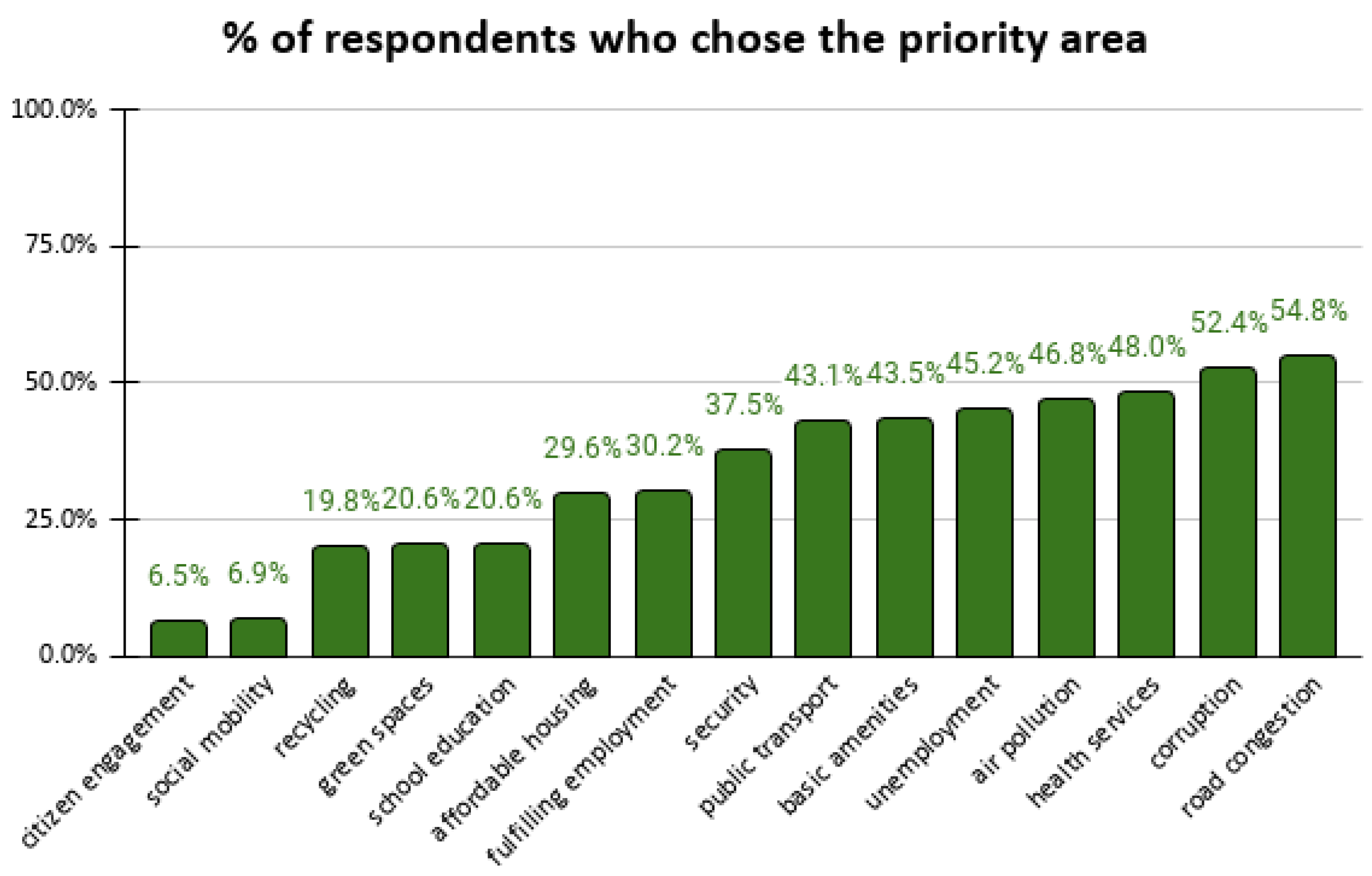
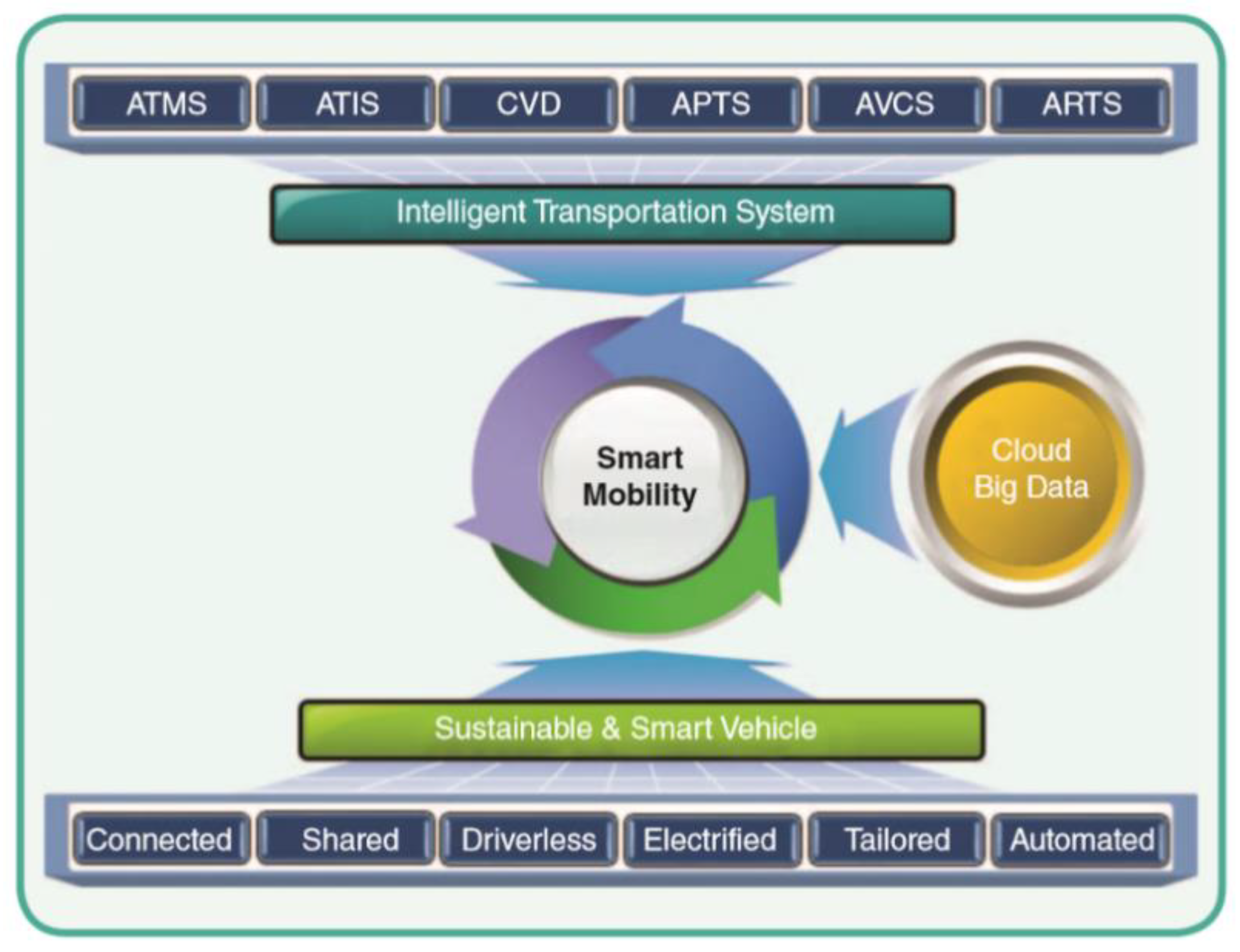
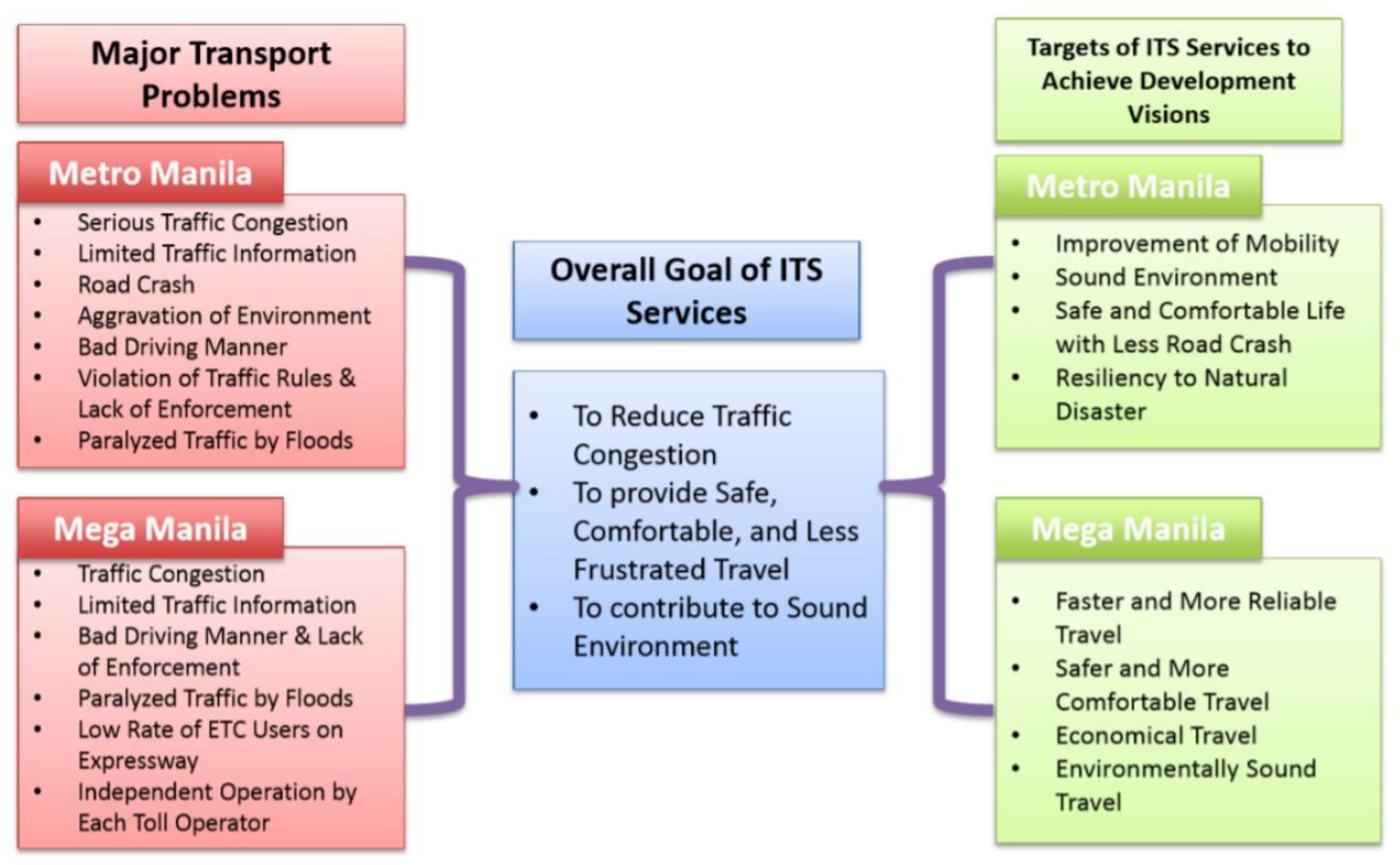
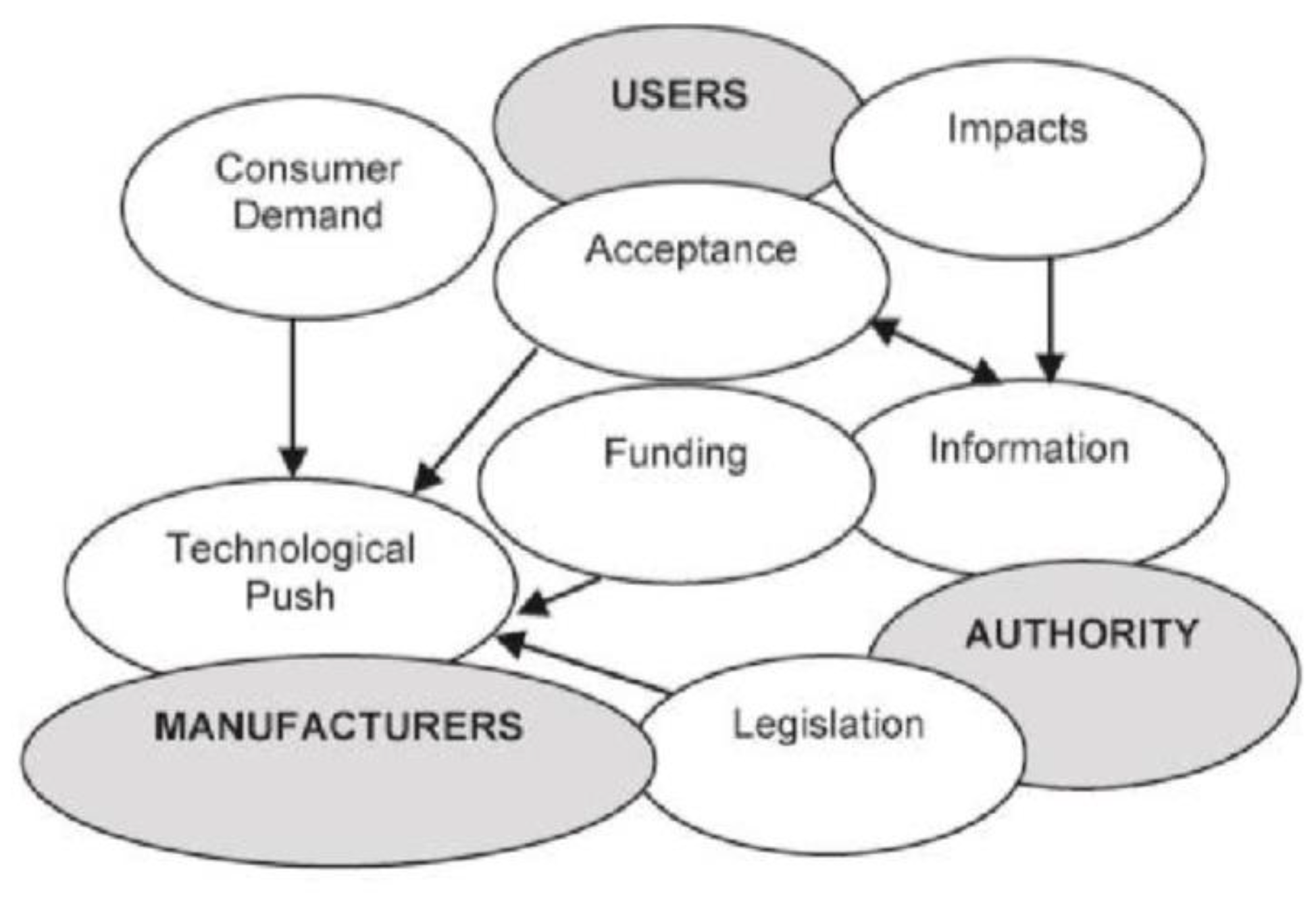
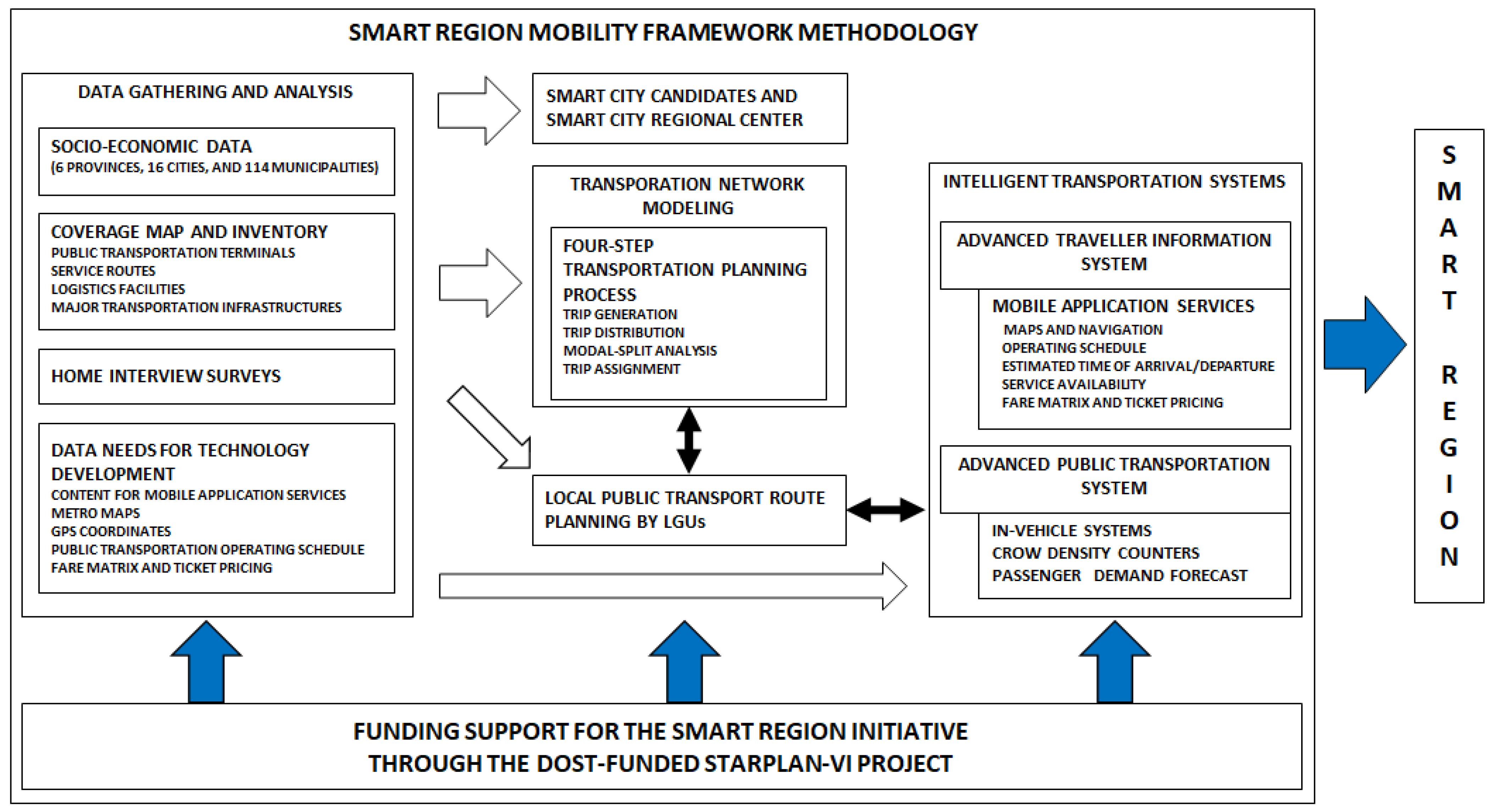
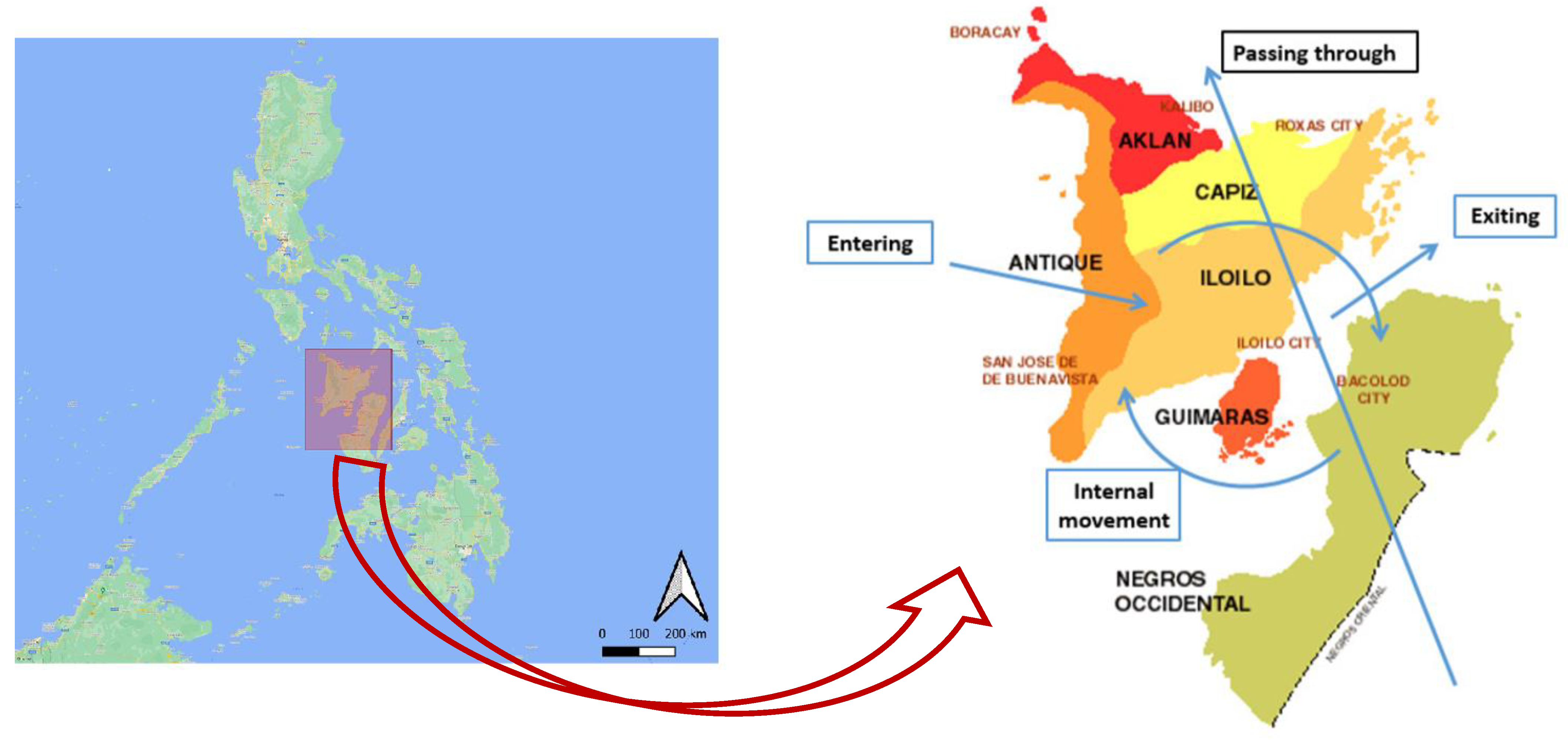
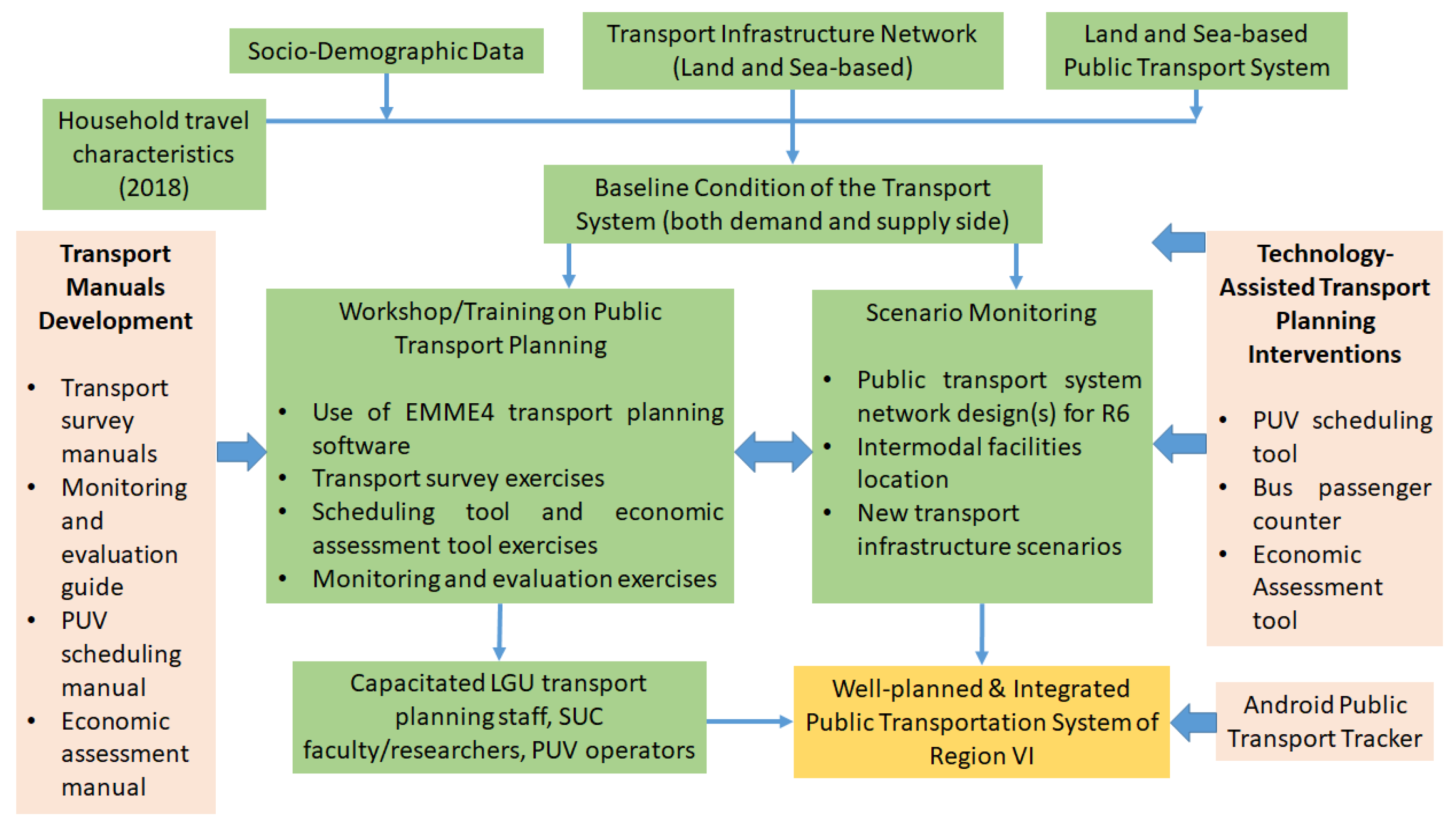
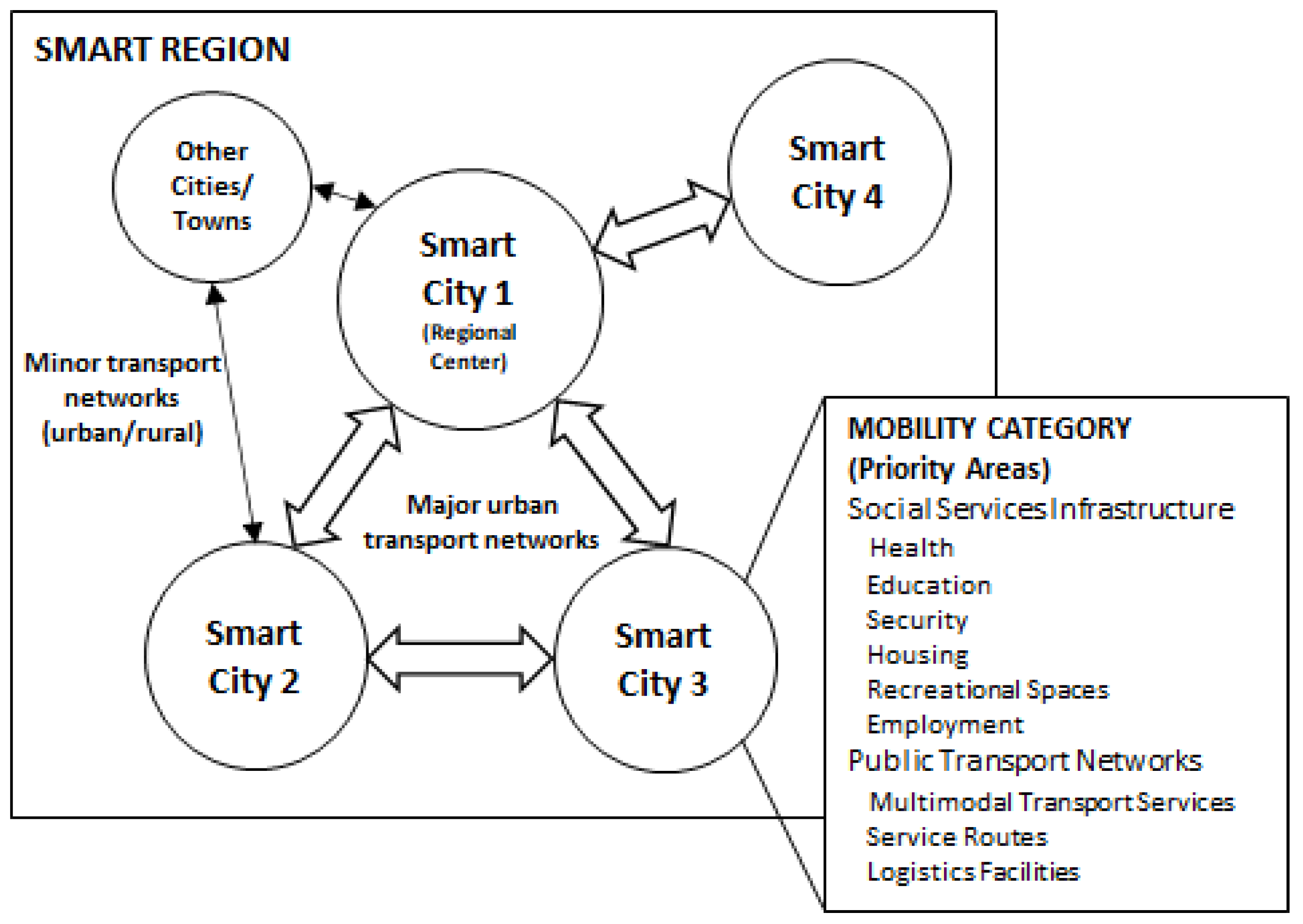
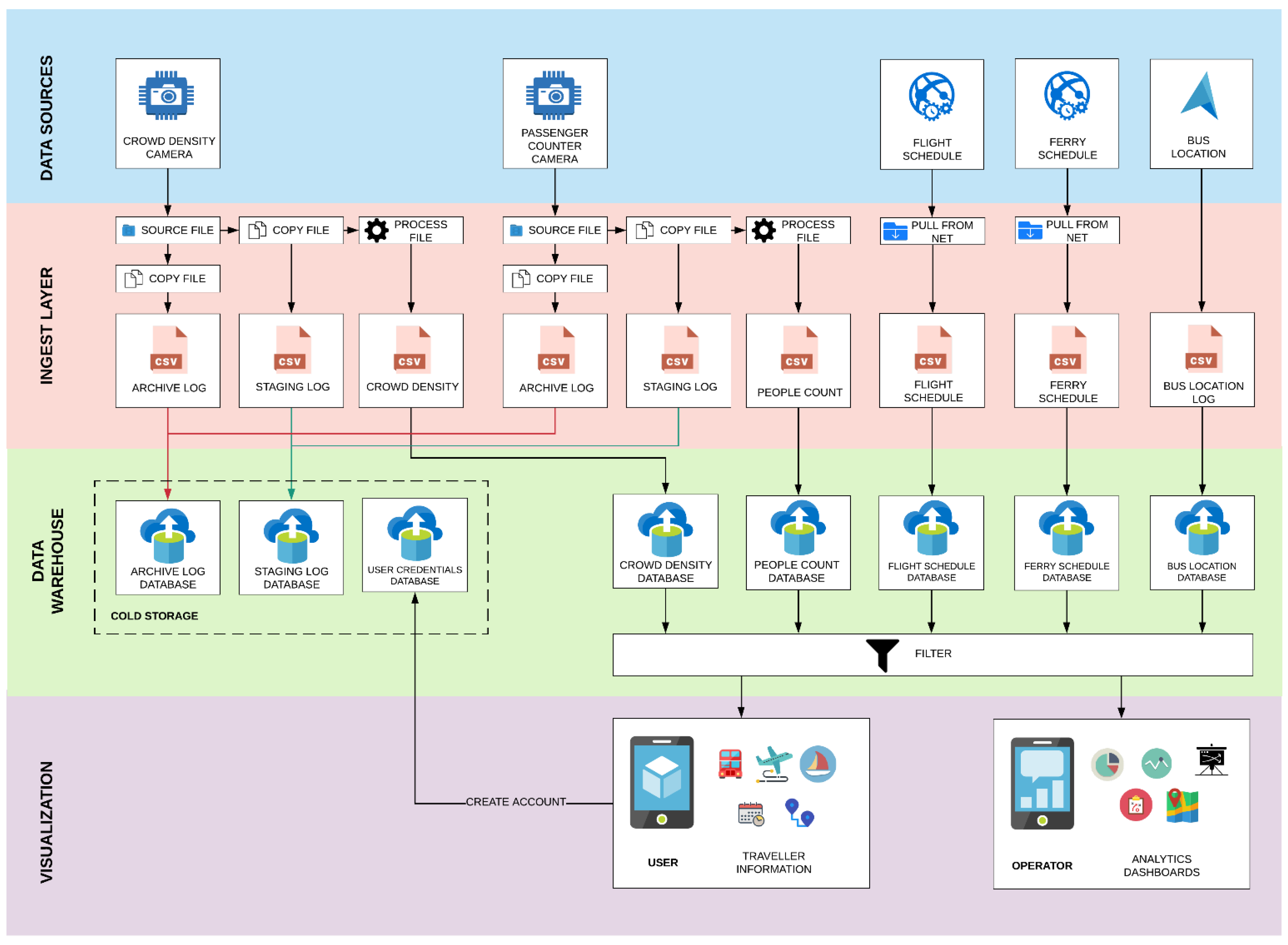
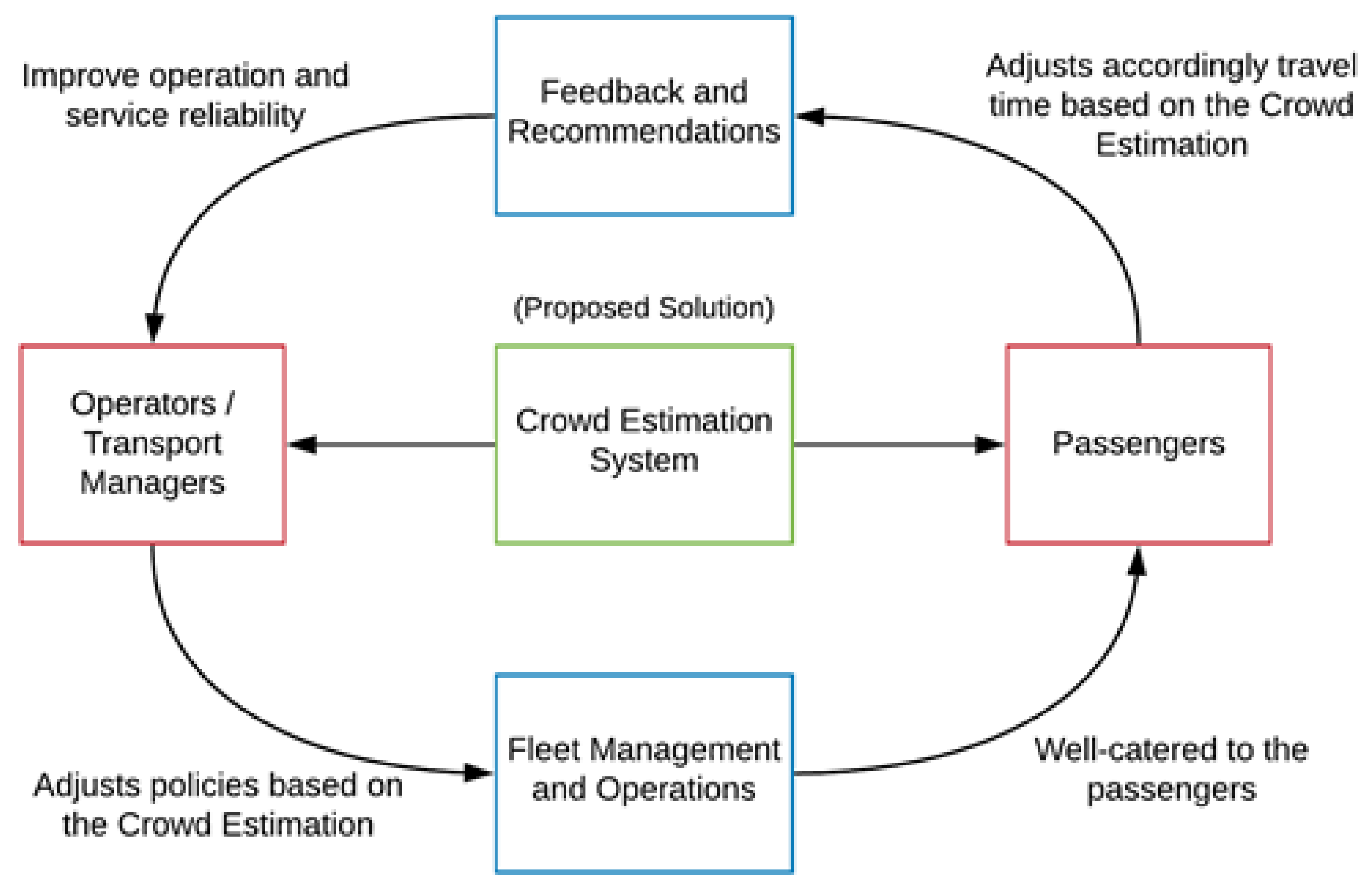
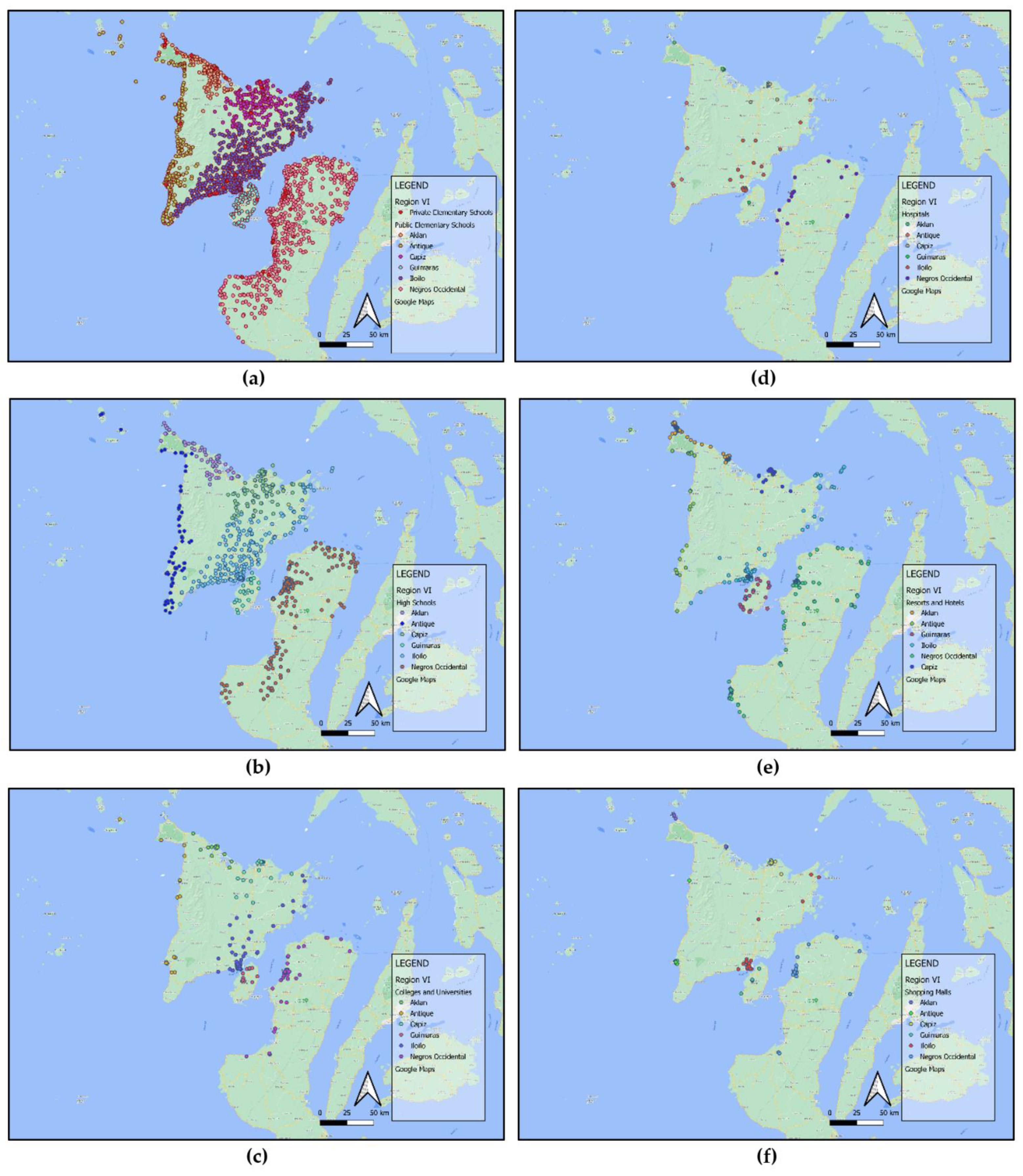
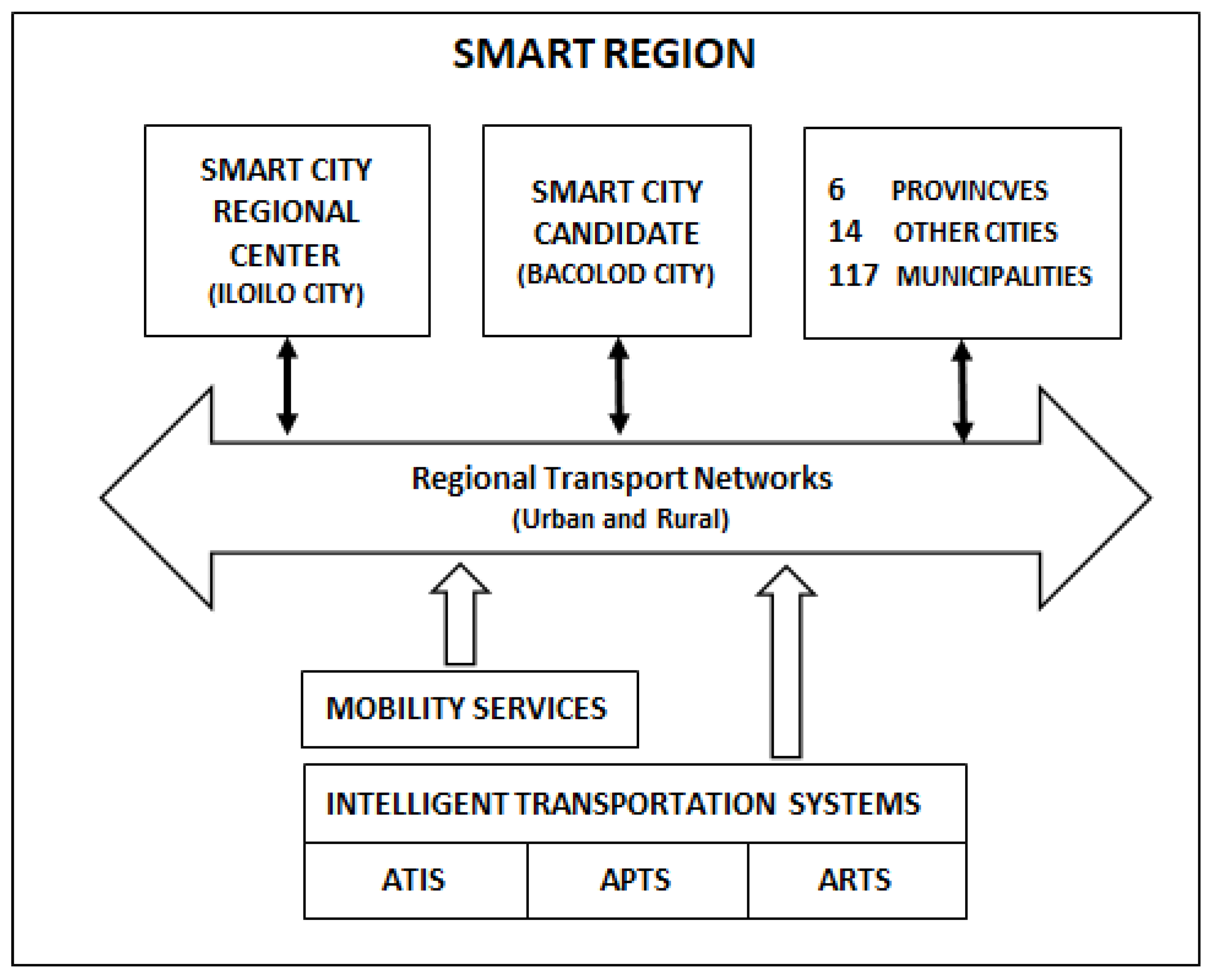
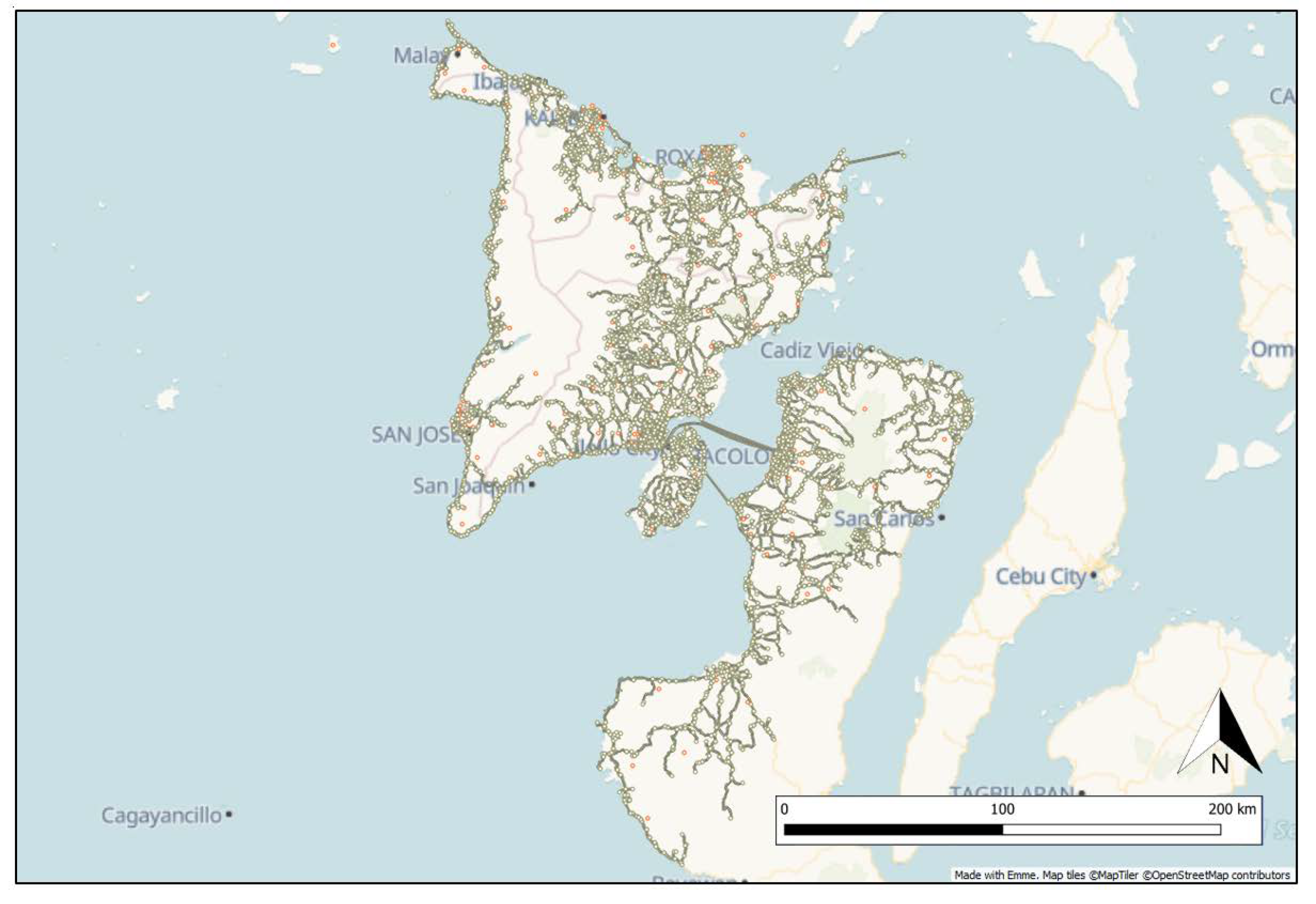
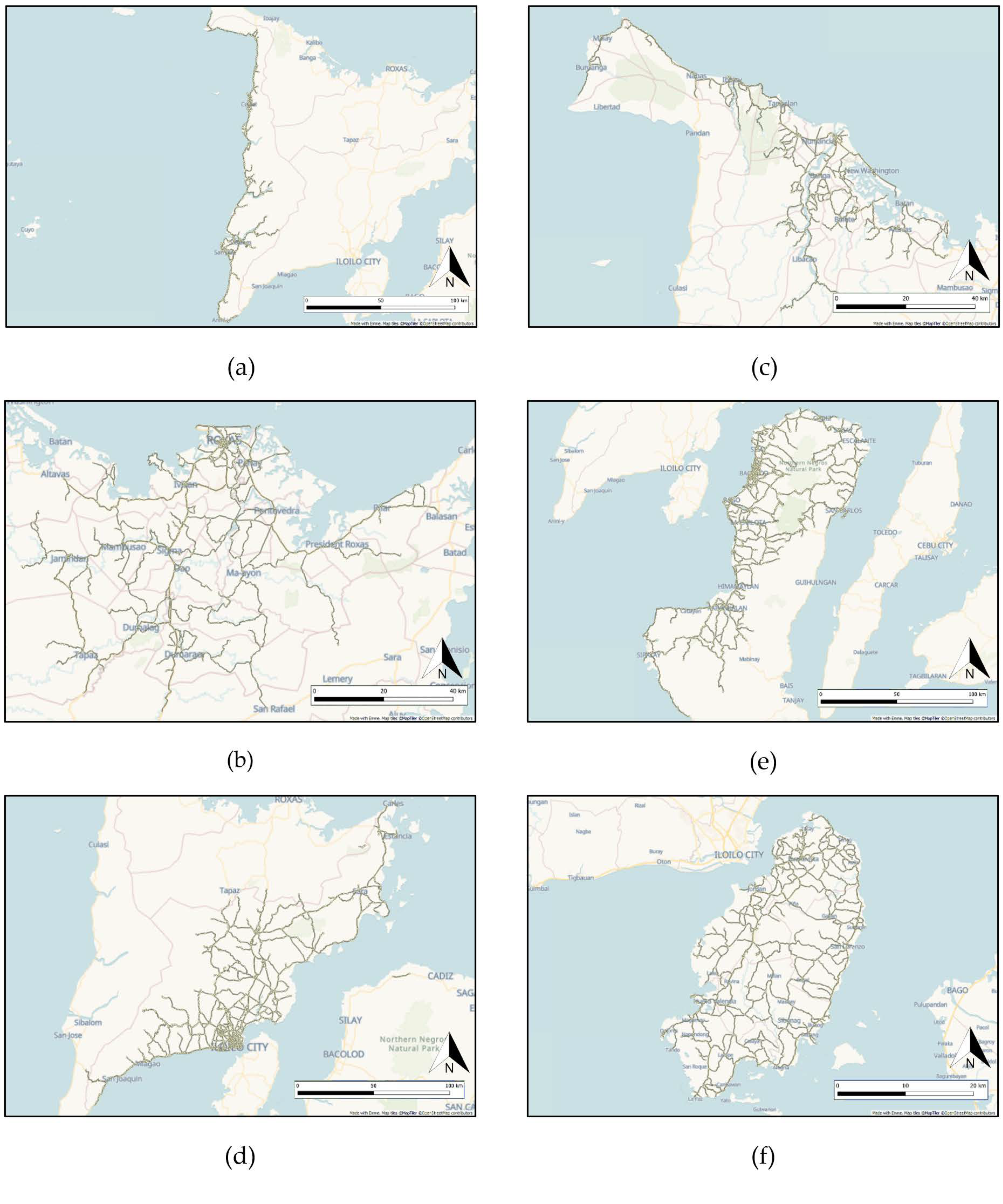
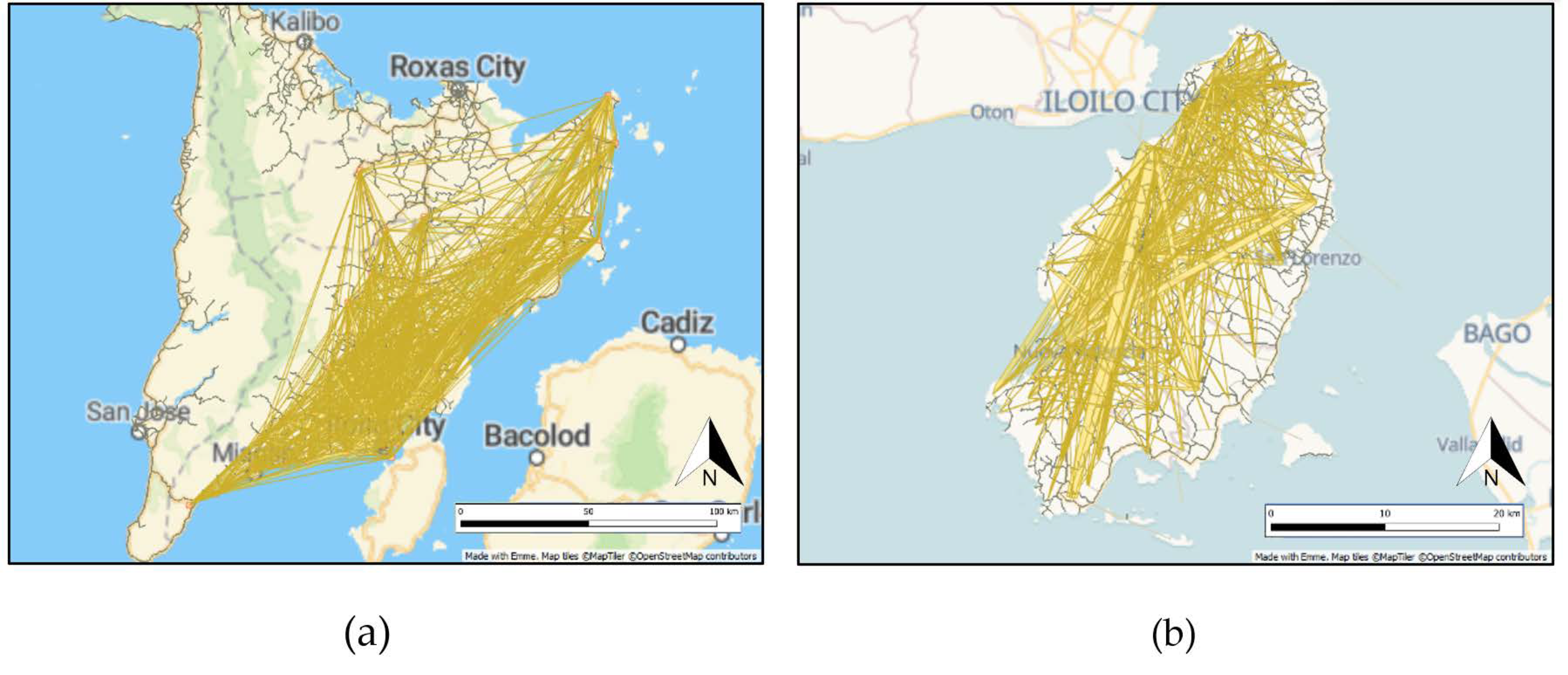
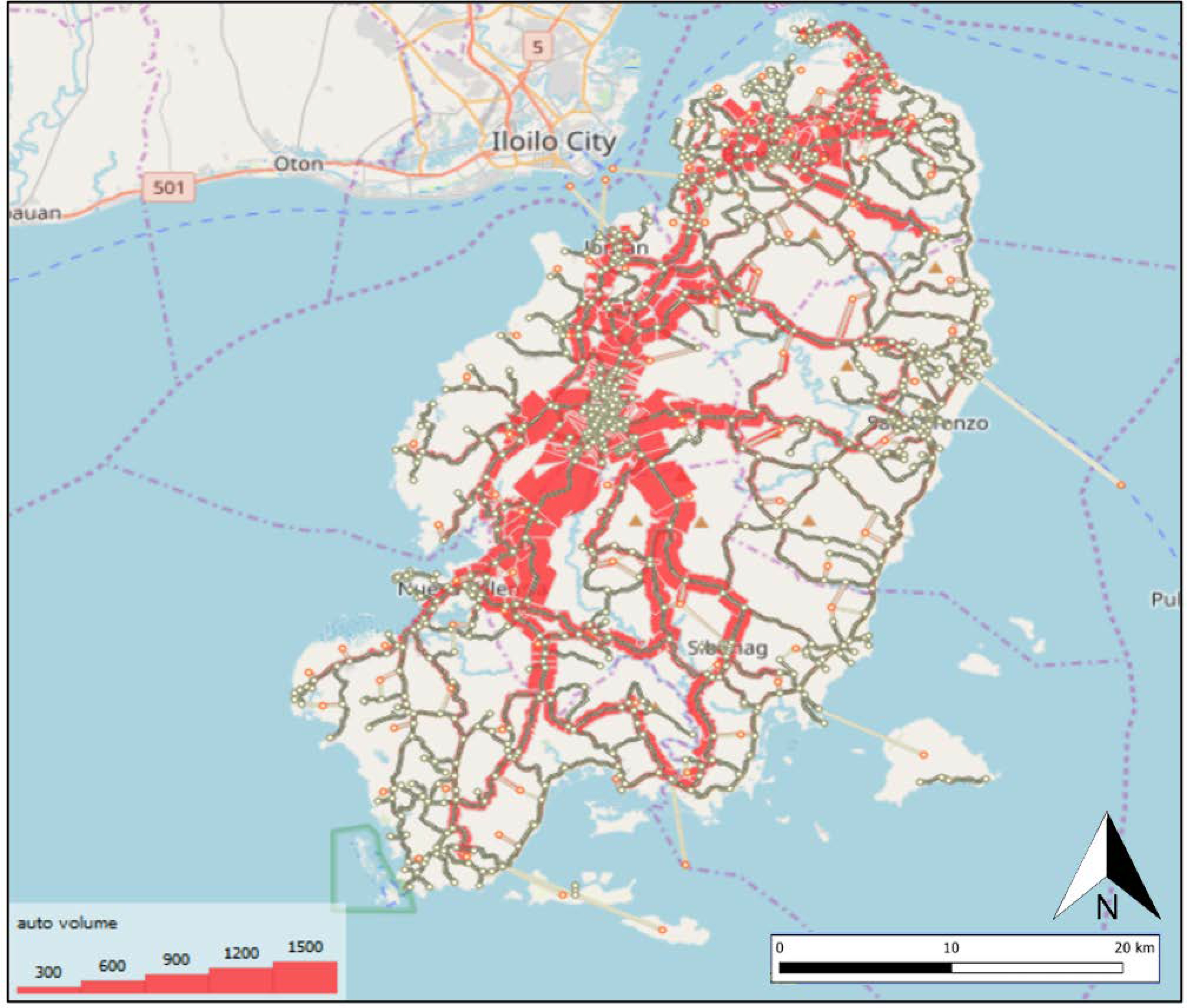
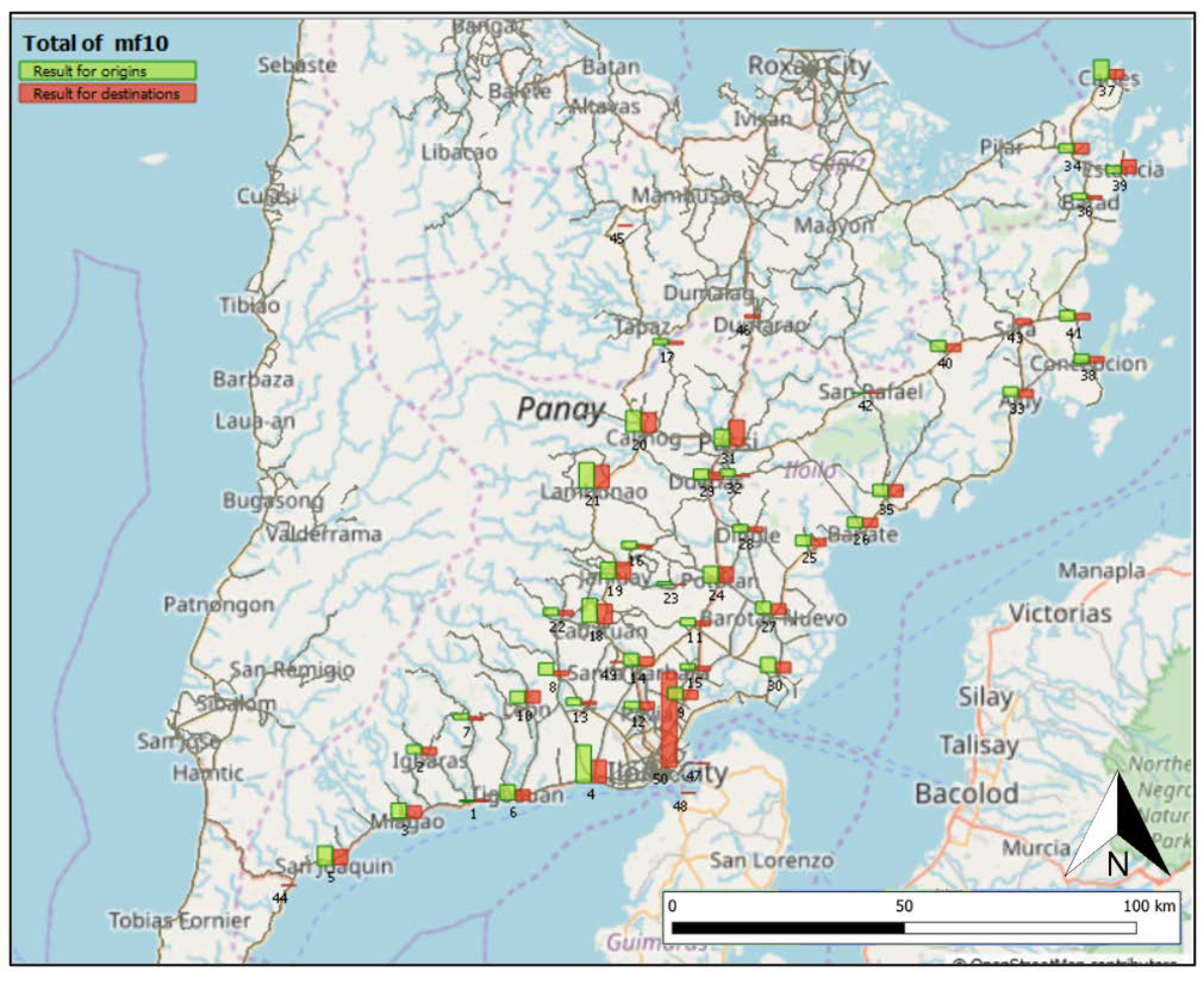
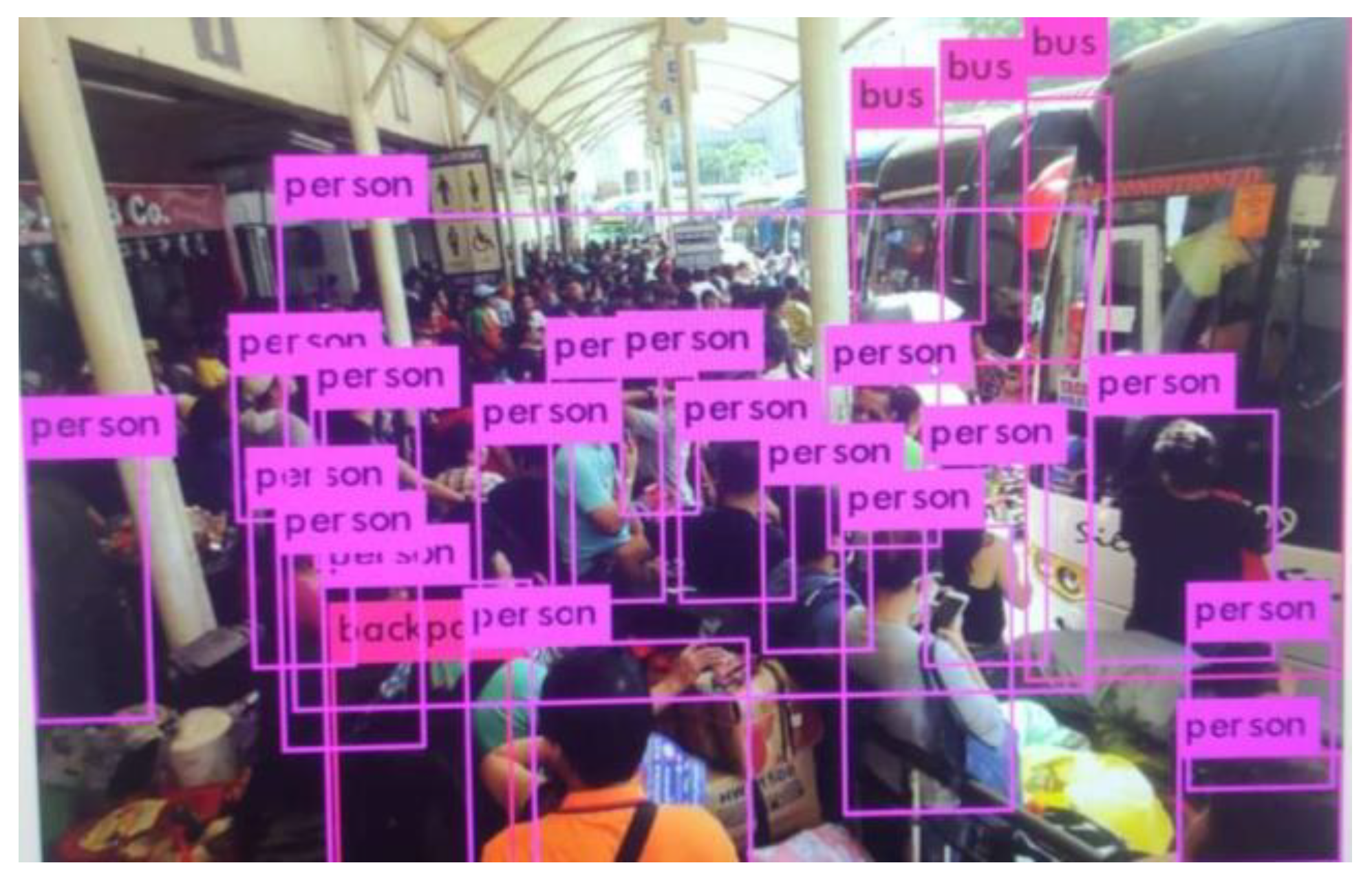
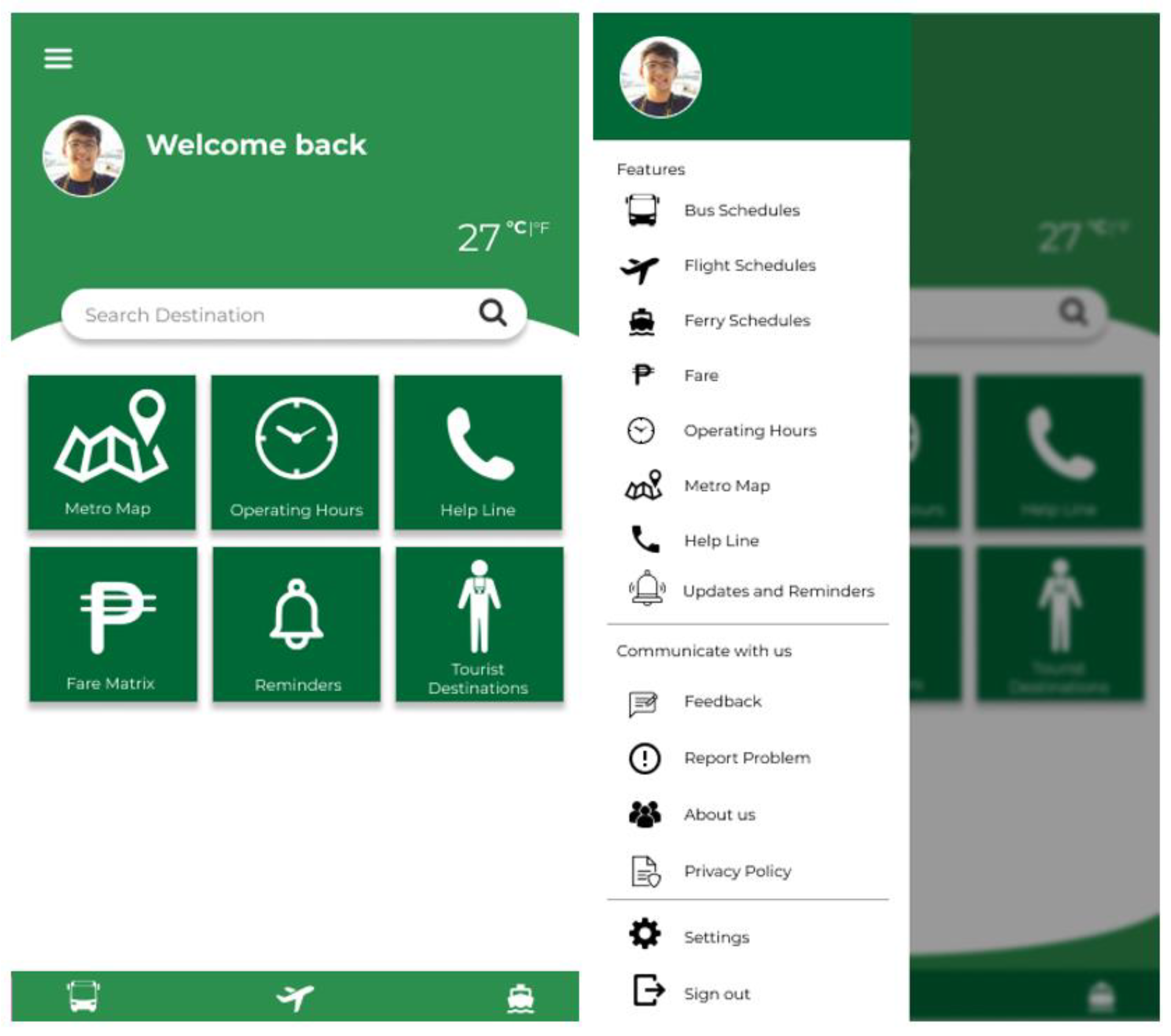
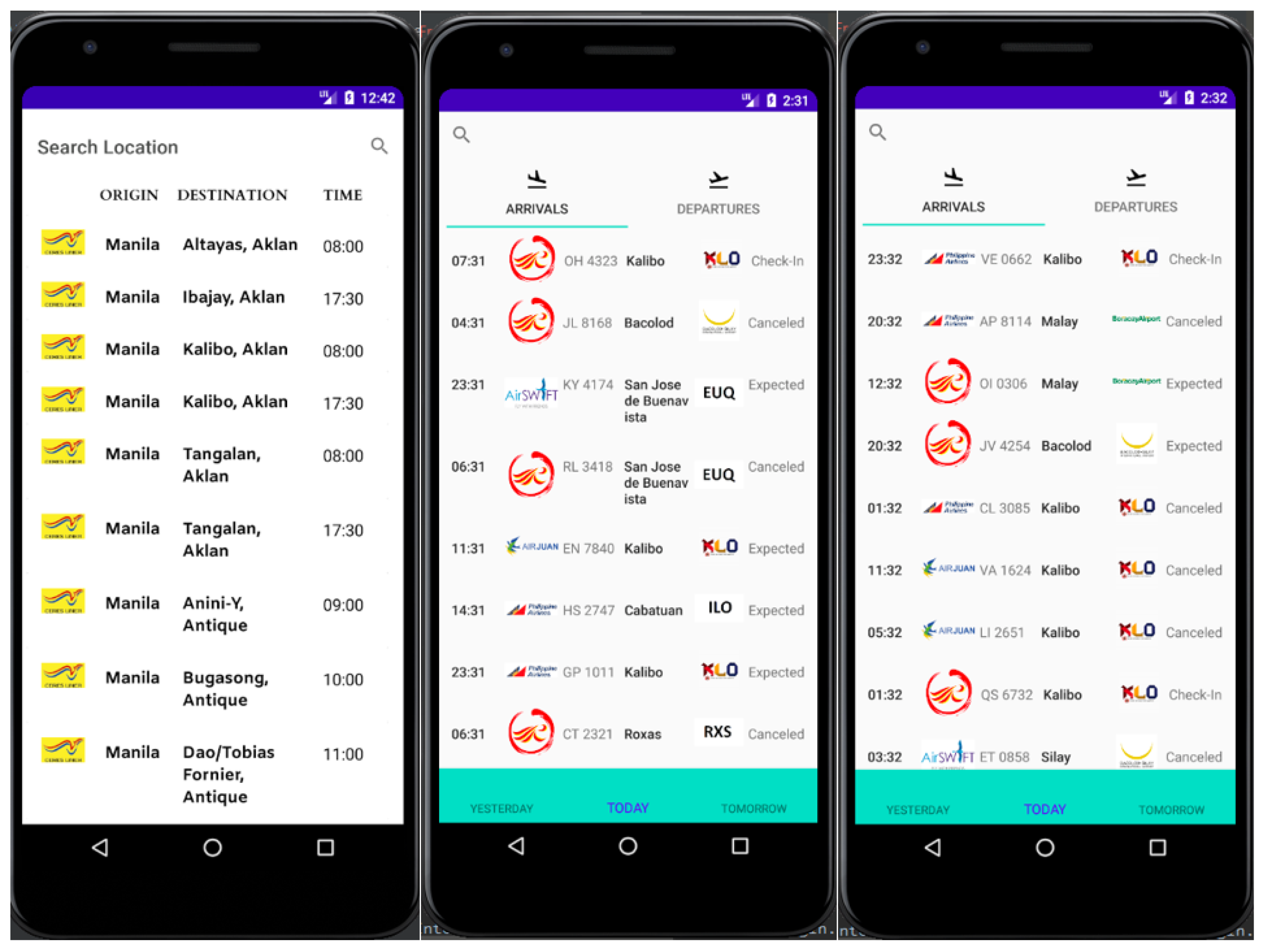
| Overall Ranking | City | Change in Ranking (2019 vs. 2020) | Overall Rating |
|---|---|---|---|
| 1 | Singapore | (0) | AAA |
| 2 | Helsinki | (+6) | AA |
| 3 | Zurick | (−1) | AA |
| 4 | Auckland | (+2) | AA |
| 5 | Oslo | (−2) | AA |
| 6 | Copenhagen | (−1) | AA |
| 7 | Geneva | (−3) | AA |
| 8 | Taipei City | (−1) | A |
| 9 | Amsterdam | (+2) | A |
| 10 | New York | (+28) | A |
| Smart City Projects | Location | Objectives | Key Performance Indicators |
|---|---|---|---|
| Portland’s Traffic Sensor Project (PTSP) [10] | Americas | (1) Help design safer streets; (2) Reduce traffic accidents and eliminate traffic fatalities; (3) Understand demand vehicle traffic flows to improve urban planning. | (1) 1% of Americans’ daily trips are made by bicycle. Portland aims to reach 25% of total trips by 2020; (2) In 2015 cyclist fatality rate was 3.2 per 1 million people, the goal is to bring it to zero by 2025. |
| Bogota Smart City Project [10] | Americas | Manage traffic operations in real time. | (1) Improve mobility, security, and service of first aid workers; (2) Integrate multiple city subsystems and data sources; (3) In 2015, commutes averaged 1.5 h, and in Bogotá, times have been cut by one-third; (4) Robberies at traffic stops decreased by 83%; (5) Air quality improved by 40%. |
| Moscow Smart City [14] | Europe | Moscow smart city project is aimed at: (1) Decreasing congestion and commute time; (2) Increasing connectivity; (3) Increasing efficiency of public institutions. | (1) Over 6.4 million users were registered with e-government services; (2) 222 services are available online to registered users; (3) Over 165 million applications were filled on the Moscow mayor’s website; (4) Average speed in rush hours increased 9–14%; (5) Number of public Wi-Fi hotspots exceeded 18,000; (6) Over 146,000 CCTV cameras across the city. |
| Copenhagen Smart City [14] | Europe | (1) Smart mobility is aimed at providing an intelligent and self-sustainable transportation system; (2) Energy and resources utilization initiatives are aimed at increasing efficiency of use of the resources as well as at lowering the carbon footprint. | (1) Carbon-neutral by 2025; (2) Zero-waste city by 2050. |
| Singapore Smart City [15] | Asia-Pacific | Singapore smart city project is aimed at: (1) Digital economy: upskill workers, enhance ICT infrastructure for businesses, and provide tech roadmaps to businesses; (2) Digital government: digitize and automate government services, building a shared secure data platform for government; (3) Digital society: encourage digital inclusion through providing mobile and broadband connection. | (1) Launched SingPass, a verification app, allowing Singaporeans to log in to government services with a fingerprint; (2) Launched SGQR, a unified QR code payment platform; (3) Launched AI Singapore, an AI innovation program for Singapore government services; (4) Launched a machine learning enabled government chat bot to respond to citizens via Facebook Messenger. |
| Hangzhou Smart City [15] | Asia-Pacific | (1) Install “City Brain” that collects, stores, and analyzes data from a vast range of government services and city infrastructure sources; (2) Digitize government services and allow cross service integration; (3) Modernize traffic control and reduce congestion; (4) Modernize firefighting to increase safety and efficiency. | (1) 1300 connected traffic lights; (2) 4500 connected cameras; (3) 420 sq. km covered in smart infrastructure; (4) Over 50 government services digitized; (5) Hangzhou went from fifth most congested city to 57th. |
| Lusail Smart City [16] | Africa and the Middle East | (1) Self-contained and sustainable city; (2) Support lifestyle and economy; (3) Efficiency of public services; (4) Intelligent transportation system by design. | (1) 2018: over 90% of infrastructure projects completed; (2) 2020: 1000+ CCTVs. |
| Kigali Smart City [16] | Africa and the Middle East | (1) Close the ICT infrastructure gap; (2) Spur social and economic development; (3) Increase efficiency of services and utilities. | (1) All government services to be online; (2) All government financial transactions to be made electronically; (3) Save over $50m through efficiency gains. |
| Activity | Time | Description |
|---|---|---|
| TBoarding | 2.0 s | Pre-payment (includes bus pass, free transfer, pay-on-leave) |
| 2.6 s | Single ticket/token | |
| 3.0 s | Exact fare | |
| 0.5 s | Additional time if standees are present on the bus | |
| TAlighting | 1.7 ot 2.0 s | Alighting time |
| Demographics and Socioeconomic Data of the Region | |
|---|---|
| No. of Cities | 16 |
| No. of Municipalities | 117 |
| Total no. of families (2018) | 1,831,864 |
| Average Annual Income (in Php) | 265,595 |
| Labor participation rate | 61.2% |
| Employment rate | 94.7% |
| Unemployment rate | 5.3% |
| Underemployment rate | 18.6% |
| Inflation rate [44] | 5.9% |
| Provinces in the Region | No. of Elementary Schools | No. of High Schools | No. of Colleges/ Universities | No. of Hospitals | No. of Public Markets | No. of Municipal Halls/ Buildings | No. of Police Stations | No. of Churches/ Convents |
|---|---|---|---|---|---|---|---|---|
| Aklan | 207 | 62 | 56 | 28 | 17 | 83 | 29 | 148 |
| Antique | 69 | 26 | 9 | 8 | 8 | 12 | 7 | 21 |
| Capiz | 70 | 30 | 12 | 8 | 12 | 14 | 13 | 104 |
| Guimaras | 27 | 16 | 5 | 2 | 6 | 6 | 8 | 53 |
| Iloilo | 664 | 160 | 92 | 27 | 36 | 49 | 68 | 144 |
| Negros Occidental | 269 | 124 | 51 | 46 | 63 | 30 | 41 | 143 |
| TOTAL | 1306 | 418 | 225 | 119 | 142 | 194 | 166 | 613 |
| Provinces in the Region | No. of Malls | No. of Hotels & Restaurants | No. of Tourist Spots |
|---|---|---|---|
| Aklan | 50 | 75 | 30 |
| Antique | 4 | 24 | 10 |
| Capiz | 7 | 19 | 15 |
| Guimaras | 3 | 55 | 7 |
| Iloilo | 26 | 166 | 144 |
| Negros Occidental | 23 | 118 | 38 |
| TOTAL | 113 | 457 | 244 |
| Provinces in the Region | No. of Airports | No. of Seaports, Riverports, and Wharfs | No. of Transportation Terminals or Multimodal Hubs | No. of Logistics Facilities |
|---|---|---|---|---|
| Aklan | 4 | 19 | 11 | 55 |
| Antique | 1 | 7 | 12 | 13 |
| Capiz | 1 | 6 | 9 | 29 |
| Guimaras | 1 | 14 | 4 | 4 |
| Iloilo | 6 | 22 | 33 | 140 |
| Negros Occidental | 4 | 21 | 20 | 56 |
| TOTAL | 17 | 89 | 89 | 297 |
| Provinces in the Region | Provincial Capital | Smart City Candidates | Smart City (Regional Center) Candidate | Total No. of Cities [43] | Total No. of Municipalities [43] |
|---|---|---|---|---|---|
| Aklan | Kalibo | - | - | 0 | 17 |
| Antique | San Jose de Buenavista | - | - | 0 | 18 |
| Capiz | Roxas city | - | - | 1 | 16 |
| Guimaras | Jordan | - | - | 0 | 5 |
| Iloilo | Iloilo city | X | X | 2 | 42 |
| Negros Occidental | Bacolod city | X | - | 13 | 19 |
Publisher’s Note: MDPI stays neutral with regard to jurisdictional claims in published maps and institutional affiliations. |
© 2021 by the authors. Licensee MDPI, Basel, Switzerland. This article is an open access article distributed under the terms and conditions of the Creative Commons Attribution (CC BY) license (https://creativecommons.org/licenses/by/4.0/).
Share and Cite
Billones, R.K.C.; Guillermo, M.A.; Lucas, K.C.; Era, M.D.; Dadios, E.P.; Fillone, A.M. Smart Region Mobility Framework. Sustainability 2021, 13, 6366. https://doi.org/10.3390/su13116366
Billones RKC, Guillermo MA, Lucas KC, Era MD, Dadios EP, Fillone AM. Smart Region Mobility Framework. Sustainability. 2021; 13(11):6366. https://doi.org/10.3390/su13116366
Chicago/Turabian StyleBillones, Robert Kerwin C., Marielet A. Guillermo, Kervin C. Lucas, Marlon D. Era, Elmer P. Dadios, and Alexis M. Fillone. 2021. "Smart Region Mobility Framework" Sustainability 13, no. 11: 6366. https://doi.org/10.3390/su13116366
APA StyleBillones, R. K. C., Guillermo, M. A., Lucas, K. C., Era, M. D., Dadios, E. P., & Fillone, A. M. (2021). Smart Region Mobility Framework. Sustainability, 13(11), 6366. https://doi.org/10.3390/su13116366








